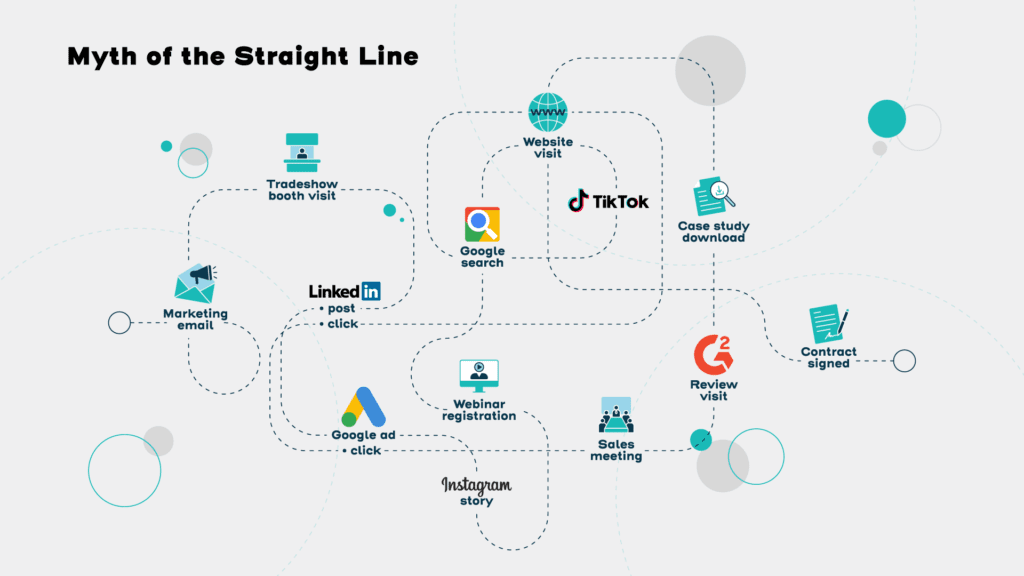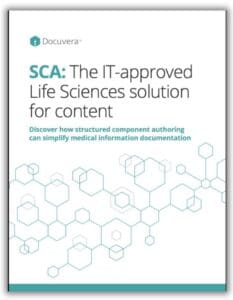As a content marketing agency that partners with incredible B2B tech companies, there is one little question we hear often. Probably a bit more frequently than this copywriter cares for. Just kidding, of course. That question is, “Should we write a whitepaper?”
Our answer, 99% of the time, is, “Yes, but.” That little three-letter coordinating conjunction is the cusp that all your marketing content hinges on. Or where it should hinge. See, we are all for writing whitepapers (and eBooks, blogs, social media, infographics, etc.). We know whitepapers can truly deliver the deep-dive goodness you need to inform and educate your buyers, or at least the decision-makers in the group. But, and here’s that word again, they must be used at the right stage of the buyer’s journey.
You need to know where your buyer is in their journey and when you are going to use this whitepaper to woo them.
Shall I elaborate?
What is a whitepaper?
Let’s start with the basics: A whitepaper is a detailed, authoritative document that explores a specific issue, topic, or technology. These marketing content pieces offer in-depth analysis, research findings, and/or insights to educate readers. Unlike promotional materials, whitepapers maintain a neutral tone and aim to provide valuable information rather than overtly promote products or services.
Whitepapers are typically longer-form content, often used as lead generation tools in B2B marketing, where companies offer them as downloadable resources in exchange for contact information. By providing comprehensive information and addressing complex industry challenges, whitepapers play an essential role in establishing thought leadership, building trust, and generating leads.
Refresh my memory, what’s the buyer’s journey?
The buyer’s journey is the path a prospective buyer takes from barely — or not even — realizing they have a problem to purchasing a product or solution to solve it.
Your prospect moves through the buyer’s journey typically like this:
- Not even knowing there is a problem
- Aware that something might be wrong
- Trying to fix it with what they have
- Considering possible vendors (but no contact yet)
- Considering a short list of potential vendors (with contact now)
- Selecting the best option and getting buy-in from their organization
- Purchase!
- Renewal/continued engagement (many forget about this step! But don’t worry, we got you partner marketers).
Your whitepaper will be SUPER HELPFUL, but (our word of the day) you won’t start using it until about the consideration phase.

Why you don’t want a whitepaper in the awareness phase
At the beginning of the buyer’s journey, your prospect doesn’t need all the technical juiciness of a whitepaper — they just need to learn that they have an issue.
Before you even start thinking about diving deep into the research findings or analysis, you need to help them understand their problem, and that there are potential solutions for it. Since you’re trying to reach a buyer who might not even know anything is wrong, you can connect via eBooks that explore the challenge, checklists or worksheets that reveal the problem or social media posts that emphasize what might go wrong if they don’t solve the problem.
Whitepapers can be great to have available (and can make good lead magnets to help buyers cross the threshold); just don’t expect them to convert a prospect who doesn’t even know they have a problem or isn’t ready to dive deep yet.
When your buyers will consider reading a whitepaper
Once your prospect is well aware that there is a problem they likely won’t be able to solve in-house, now is the whitepaper’s time to shine. It’s the perfect opportunity to showcase thought leadership, present case studies, and offer detailed insights. As potential customers move into the consideration stage, they are actively researching solutions. This is when a whitepaper can be highly valuable.
Whitepapers provide the in-depth information they need to better understand how your product or service can address their scenario. Check it out:
 For example, our client Docuvera has an innovative solution for pharma documentation development. Their customers belong to a highly regulated industry, and the platform is designed for a process that includes many individuals and pieces of content. BUT one of the biggest roadblocks for global orgs isn’t the users; it’s the IT department needed to implement and sustain the use of the product. So, we helped Docuvera write a whitepaper to help answer this consideration question: what is the impact on IT?
For example, our client Docuvera has an innovative solution for pharma documentation development. Their customers belong to a highly regulated industry, and the platform is designed for a process that includes many individuals and pieces of content. BUT one of the biggest roadblocks for global orgs isn’t the users; it’s the IT department needed to implement and sustain the use of the product. So, we helped Docuvera write a whitepaper to help answer this consideration question: what is the impact on IT?
How whitepapers support buying decisions
In the later stages of the sales funnel or buyer’s journey, potential customers are evaluating different options and are close to making the purchase. Whitepapers can provide the detailed information that helps the ultimate decision-maker give the ok. Here, you can tailor your whitepaper to highlight the unique features and benefits of your solution, address common objections, and provide evidence of your product’s effectiveness through case studies, testimonials, and ROI calculations.
Navigate the buyer’s journey — and whitepaper writing — with a trusty guide
When used at the right time, whitepapers can provide a ton of value. But, (our word of the day one last time), they can be so much work. That’s why a content marketing agency that gets exactly how this in-depth collateral fits into the buyer’s journey can be just the ace up your sleeve you need.
If you’d like to join us for this whitepaper season, we’d love to help you out! Just reach out, and we’ll go from there.
